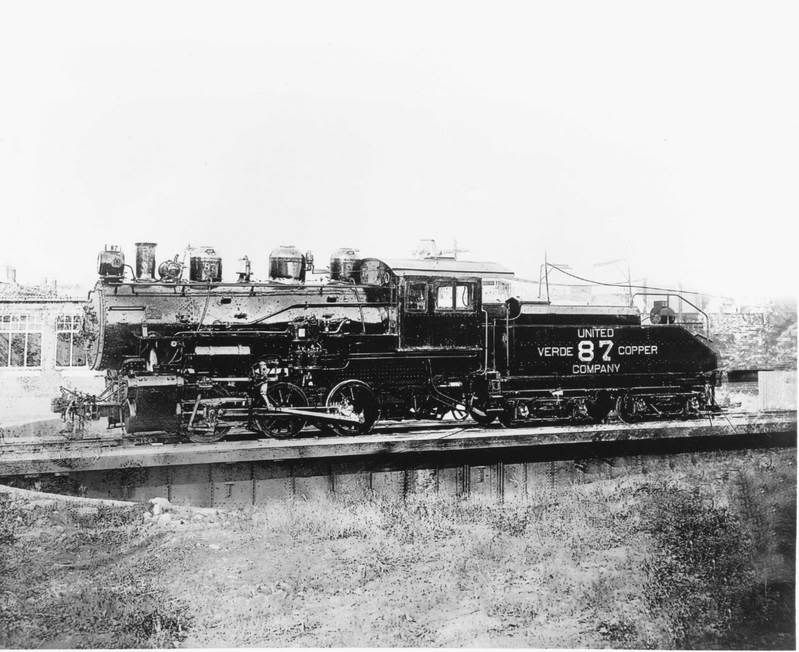
 In this second photo under close inspection you can just make out the shimmer coming off the copper leaf lettering on the tender, a special request of United Verde.
In this second photo under close inspection you can just make out the shimmer coming off the copper leaf lettering on the tender, a special request of United Verde.
Also of note was the fact that this engine originally had a cross-compound air pump mounted on each side. Double pumps no doubt due to the fact that it would need to continually pump up air-actuated side dump cars, which carried the copper ore to the crusher at the plant. The next photo shows the cab interior. If you look closely you can make out a third air valve adjacent to the train air valves. This valve was for admitting air into a secondary air line that charged the dump cars. In the upper left side above the fireman's seat you will notice the hydrostatic flange oiler, indicating that this engine was intended to run on sharp curvatures, which no doubt it did:

The engine was originally built as a coal burner. In the photo above you can see two plugs for the arch tubes on either side of the oil shelf above the fire door. These arch tubes held up the arch brick, which forced the heat from the coal fire to curl around to the back of the firebox, heating the space more evenly. After being purchased in 1927 by the WP, the arch tubes were removed and the the engine converted to oil.
Another modification made by the WP was lowering the boiler site glass to the standard 3" above the highest level of the crown sheet. When built the bottom of the glass was 8" above the crown, evidently the copper company wanted the extra measure of safety, or just didn't trust their men to keep water in the glass. I suppose we will never know.
It's interesting (at least to me) that none of the Western Pacific 0-6-0 locomotives were set up to burn coal, even though the eastern portion of the Railroad was dirt-burning. No doubt any switching duties on the east end were performed by road locomotives, or the small handful of coal burning 2-8-0's. - JCA.jpg)



